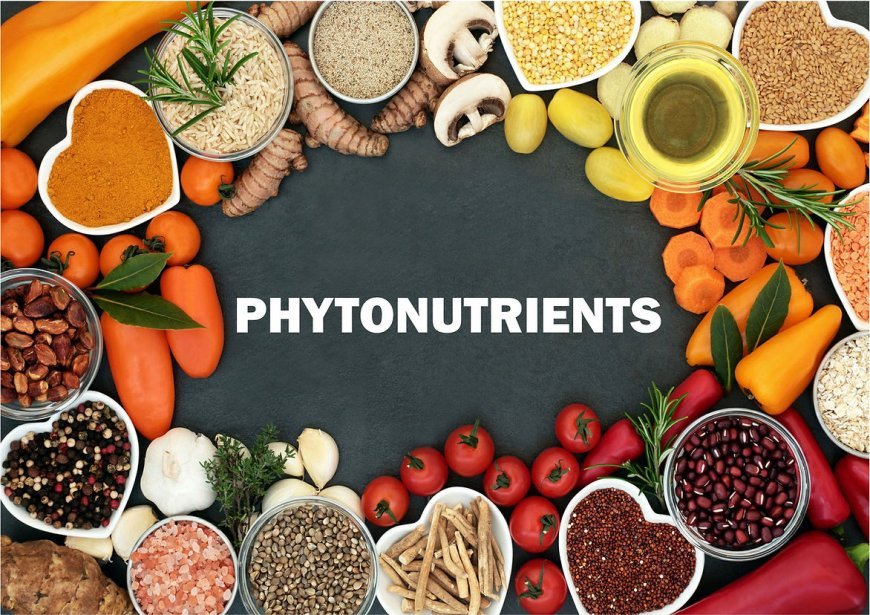Phytonutrients
In the vibrant tapestry of nature, plants weave a complex web of compounds, and among them, phytonutrients stand out as unsung heroes.

Phytonutrients: The Hidden Power in Your Plate
In the vibrant tapestry of nature, plants weave a complex web of compounds, and among them, phytonutrients stand out as unsung heroes. These bioactive compounds, derived from plants, contribute not only to the plants' resilience but also to the health of those who consume them. As we delve into the world of phytonutrients, a fascinating journey unfolds, revealing the diverse array of compounds that paint our fruits, vegetables, and herbs with a spectrum of colors, flavors, and potential health benefits.
Diversity in Nature: A Phytonutrient Panorama
The term "phytonutrient" combines two words: "phyto," meaning plant, and "nutrient," signifying a substance that provides nourishment. These compounds are not classified as essential nutrients like vitamins or minerals, but their presence in the plant kingdom is critical for the survival and well-being of plants. As it turns out, their benefits extend beyond the plant kingdom to humans who include a variety of plant-based foods in their diets.
Phytonutrients represent a vast and diverse group of compounds, with over thousands identified to date. Among the most well-known are flavonoids, carotenoids, glucosinolates, and lignans. Each category carries its unique set of properties, colors, and flavors, and it is this diversity that contributes to the rich tapestry of plant-based foods.
Flavonoids: Nature's Color Palette
Flavonoids, found in fruits, vegetables, tea, and red wine, are perhaps the most recognized group of phytonutrients. These compounds not only provide vibrant hues to our favorite foods but also offer antioxidant properties. Quercetin, found in apples and onions, is known for its anti-inflammatory effects, while the flavonoids in dark chocolate may have cardiovascular benefits.
The kaleidoscope of colors in berries, citrus fruits, and leafy greens is a visual testament to the abundance of flavonoids in nature. These compounds not only protect plants from environmental stressors but also contribute to the human body's defense against oxidative stress and inflammation.
Carotenoids: Beyond Orange
Carotenoids, responsible for the orange, red, and yellow pigments in many fruits and vegetables, are another group of phytonutrients with a compelling story. Beta-carotene, found in carrots, sweet potatoes, and pumpkins, is a precursor to vitamin A and plays a crucial role in vision health. Lycopene, responsible for the red color in tomatoes, has been associated with a reduced risk of certain cancers, particularly prostate cancer.
Interestingly, some carotenoids, such as lutein and zeaxanthin, accumulate in the retina of the eye, where they contribute to visual health and may help prevent age-related macular degeneration. So, the next time you enjoy a plate of colorful vegetables, you're not just treating your taste buds – you're nourishing your eyes and promoting overall well-being.
Glucosinolates: The Cruciferous Crusaders
Cruciferous vegetables, including broccoli, Brussels sprouts, and kale, owe their distinctive flavors and potential health benefits to a group of phytonutrients known as glucosinolates. When these vegetables are chopped or chewed, glucosinolates break down into compounds with potent anti-cancer properties.
Indole-3-carbinol, a breakdown product of glucosinolates, has been studied for its potential to reduce the risk of certain cancers, particularly those affecting the breast and prostate. These cruciferous crusaders not only add a delightful crunch to salads and stir-fries but also contribute to the body's defense against harmful cellular changes.
Lignans: Fiber's Sidekick
While lignans are present in a variety of plant foods, they are particularly abundant in seeds, whole grains, and flaxseeds. Once consumed, these compounds can be converted by the gut microbiota into enterolignans, which may have antioxidant properties and potential hormone-balancing effects.
Flaxseeds, for example, have gained popularity not only for their rich omega-3 fatty acid content but also for their lignan content. Studies suggest that lignans may play a role in reducing the risk of certain hormone-related cancers, such as breast cancer. So, when you sprinkle flaxseeds on your yogurt or oatmeal, you're not just adding texture – you're incorporating a dose of lignan goodness.
The Body's Symphony: How Phytonutrients Work Together
One of the remarkable aspects of phytonutrients is the synergy that exists among them. Rather than acting in isolation, these compounds often work in concert, creating a harmonious symphony of health benefits. The combination of flavonoids, carotenoids, glucosinolates, and lignans in a varied diet contributes to the body's overall defense against oxidative stress, inflammation, and chronic diseases.
For instance, the vitamin C in citrus fruits enhances the absorption of non-heme iron from plant sources, while the flavonoids in tea may complement the cardiovascular benefits of omega-3 fatty acids found in certain fish. It's this intricate dance of compounds that highlights the importance of embracing a diverse and colorful array of plant-based foods.
Unlocking the Potential: Health Benefits of Phytonutrients
The potential health benefits of phytonutrients extend far beyond their antioxidant properties. Research suggests that these bioactive compounds may contribute to a range of health outcomes, from supporting heart health to reducing the risk of certain cancers.
The antioxidant properties of many phytonutrients play a crucial role in neutralizing free radicals – unstable molecules that can damage cells and contribute to aging and chronic diseases. By scavenging these free radicals, phytonutrients help protect the body's cells from oxidative stress.
Beyond their antioxidant capabilities, phytonutrients may also modulate various cellular processes, including inflammation, DNA repair, and cell communication. For example, the anti-inflammatory effects of flavonoids may help reduce the risk of chronic inflammatory conditions, such as heart disease and arthritis.
Moreover, some phytonutrients exhibit antimicrobial properties, contributing to the plant's natural defense against pathogens. When we consume these compounds, we may benefit from their antimicrobial effects, supporting our immune system's ability to fend off infections.
Putting Knowledge into Practice: Tips for a Phytonutrient-Rich Diet
Incorporating a variety of phytonutrient-rich foods into your diet doesn't have to be a complex task. Here are some practical tips to harness the power of phytonutrients and make them a delicious part of your daily meals:
Eat the Rainbow: Aim to include a diverse range of colorful fruits and vegetables in your meals. Different colors often indicate distinct phytonutrient profiles, so the more variety, the better.
Choose Whole Foods: Opt for whole, minimally processed foods to maximize your phytonutrient intake. Whole grains, nuts, seeds, and legumes are excellent sources of various phytonutrients.
Experiment with Herbs and Spices: Herbs and spices are not just flavor enhancers; they also contribute a wealth of phytonutrients. Try adding fresh herbs like basil, cilantro, or mint to your dishes for an extra nutrient boost.
Include a Variety of Plant Proteins: Plant-based proteins, such as beans, lentils, and tofu.
